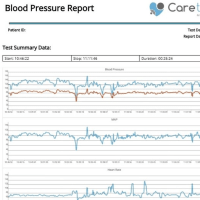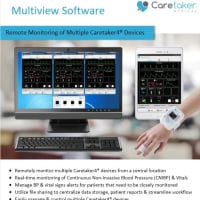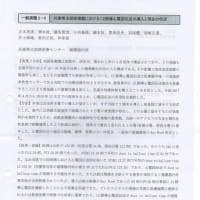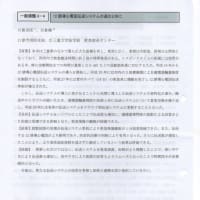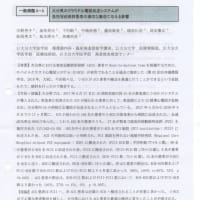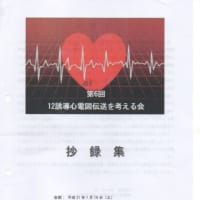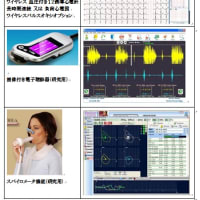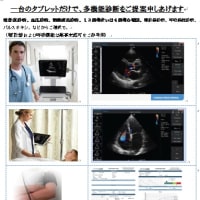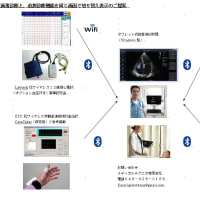Pulse Decomposition Analysis of the digital arterial pulse during hemorrhage simulation
Markers of temporal changes in central blood volume are required to non-invasively detect hemorrhage and the onset of hemorrhagic shock. Recent work suggests that pulse pressure may be such a marker. A new approach to tracking blood pressure, and pulse pressure specifically is presented that is based on a new form of pulse pressure wave analysis called Pulse Decomposition Analysis (PDA). The premise of the PDA model is that the peripheral arterial pressure pulse is a superposition of five individual component pressure pulses, the first of which is due to the left ventricular ejection from the heart while the remaining component pressure pulses are reflections and re-reflections that originate from only two reflection sites within the central arteries. The hypothesis examined here is that the PDA parameter T13, the timing delay between the first and third component pulses, correlates with pulse pressure.
T13 was monitored along with blood pressure, as determined by an automatic cuff and another continuous blood pressure monitor, during the course of lower body negative pressure (LBNP) sessions involving four stages, -15 mmHg, -30 mmHg, -45 mmHg, and -60 mmHg, in fifteen subjects (average age: 24.4 years, SD: 3.0 years; average height: 168.6 cm, SD: 8.0 cm; average weight: 64.0 kg, SD: 9.1 kg).
Results
Statistically significant correlations between T13 and pulse pressure as well as the ability of T13 to resolve the effects of different LBNP stages were established. Experimental T13 values were compared with predictions of the PDA model. These interventions resulted in pulse pressure changes of up to 7.8 mmHg (SE = 3.49 mmHg) as determined by the automatic cuff. Corresponding changes in T13 were a shortening by -72 milliseconds (SE = 4.17 milliseconds). In contrast to the other two methodologies, T13 was able to resolve the effects of the two least negative pressure stages with significance set at p < 0.01.
Conclusions
The agreement of observations and measurements provides a preliminary validation of the PDA model regarding the origin of the arterial pressure pulse reflections. The proposed physical picture of the PDA model is attractive because it identifies the contributions of distinct reflecting arterial tree components to the peripheral pressure pulse envelope. Since the importance of arterial pressure reflections to cardiovascular health is well known, the PDA pulse analysis could provide, beyond the tracking of blood pressure, an assessment tool of those reflections as well as the health of the sites that give rise to them.
Markers of temporal changes in central blood volume are required to non-invasively detect hemorrhage and the onset of hemorrhagic shock. Recent work suggests that pulse pressure may be such a marker. A new approach to tracking blood pressure, and pulse pressure specifically is presented that is based on a new form of pulse pressure wave analysis called Pulse Decomposition Analysis (PDA). The premise of the PDA model is that the peripheral arterial pressure pulse is a superposition of five individual component pressure pulses, the first of which is due to the left ventricular ejection from the heart while the remaining component pressure pulses are reflections and re-reflections that originate from only two reflection sites within the central arteries. The hypothesis examined here is that the PDA parameter T13, the timing delay between the first and third component pulses, correlates with pulse pressure.
T13 was monitored along with blood pressure, as determined by an automatic cuff and another continuous blood pressure monitor, during the course of lower body negative pressure (LBNP) sessions involving four stages, -15 mmHg, -30 mmHg, -45 mmHg, and -60 mmHg, in fifteen subjects (average age: 24.4 years, SD: 3.0 years; average height: 168.6 cm, SD: 8.0 cm; average weight: 64.0 kg, SD: 9.1 kg).
Results
Statistically significant correlations between T13 and pulse pressure as well as the ability of T13 to resolve the effects of different LBNP stages were established. Experimental T13 values were compared with predictions of the PDA model. These interventions resulted in pulse pressure changes of up to 7.8 mmHg (SE = 3.49 mmHg) as determined by the automatic cuff. Corresponding changes in T13 were a shortening by -72 milliseconds (SE = 4.17 milliseconds). In contrast to the other two methodologies, T13 was able to resolve the effects of the two least negative pressure stages with significance set at p < 0.01.
Conclusions
The agreement of observations and measurements provides a preliminary validation of the PDA model regarding the origin of the arterial pressure pulse reflections. The proposed physical picture of the PDA model is attractive because it identifies the contributions of distinct reflecting arterial tree components to the peripheral pressure pulse envelope. Since the importance of arterial pressure reflections to cardiovascular health is well known, the PDA pulse analysis could provide, beyond the tracking of blood pressure, an assessment tool of those reflections as well as the health of the sites that give rise to them.










